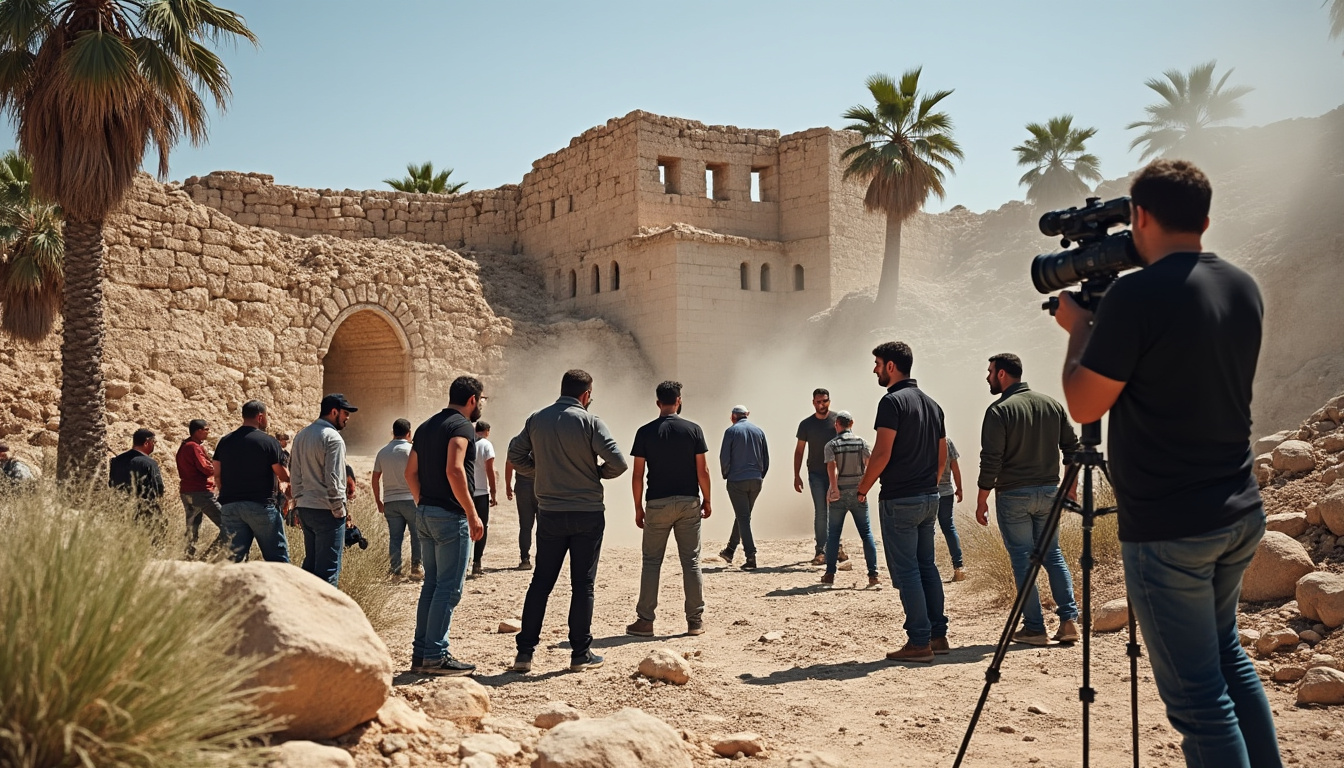The film industry is abuzz with the shocking news of the violent assault and subsequent arrest of Hamdan Ballal, the acclaimed co-director of the Oscar-winning documentary No Other Land. This chilling incident has once again spotlighted the complex geopolitical tensions in the region and their impact on artists and activists. Ballal’s ordeal raises pressing questions about freedom of expression, safety in the creative community, and the role of media in reporting these critical events.
Violence on the Ground: A Deep Dive into Hamdan Ballal’s Attack
On March 24, 2025, Hamdan Ballal was reportedly attacked by Israeli settlers while documenting conditions in his homeland, a situation tragically emblematic of the ongoing strife in the region. Co-director Yuval Abraham took to social media to share his harrowing account, revealing that a group of armed settlers physically assaulted Ballal in Susya, located in the Masafer Yatta area south of Hebron. The attack, described as a lynching, left Ballal with serious injuries, including bleeding from his head and stomach.

Eyewitnesses, including activist Josh Kimelman, emphasized the chaotic nature of the event. Kimelman stated, “We don’t know where Hamdan is because he was taken away in a blindfold,” amplifying concerns about the safety and well-being of the filmmaker. This incident is not an isolated case; it sits at the intersection of artistic expression and political violence in a volatile region, echoing the urgent need for awareness and structural change.
Widespread Support and Outrage
In the aftermath of the attack, a groundswell of support has emerged for Ballal and his collaborators. Many in the arts and activist communities have rallied to shed light on the alarming trend of aggression towards filmmakers and journalists documenting the realities of conflict. Notable media outlets have covered the story, highlighting the importance of documenting such incidents for broader public awareness and historical context.
- Calls for action to protect artists and activists.
- Pledges from prominent figures in the entertainment industry for increased awareness and advocacy.
- Discussions on the implications of state-sanctioned violence against documentary filmmakers.
| Notable Reactions | Description |
|---|---|
| Yuval Abraham | Co-director calls for immediate attention to the plight of artists in conflict zones. |
| Center for Jewish Nonviolence | Released footage showcasing the incident, drawing public attention. |
| Public Outcry | Activists and fans flood social media with messages of support for Ballal. |
The intense media coverage highlights the potential for change. Documentaries like No Other Land serve essential roles in making invisible narratives visible. Furthermore, they offer vital spaces for dialogue on human rights and freedom, posing critical questions about safety in the creative arts.
Understanding the Context: The Arab-Israeli Conflict and its Impact on Artists
The Arab-Israeli conflict serves as a backdrop for Ballal’s harrowing experience, wherein artistic expression is often marred by violence. Over the decades, cultural producers have faced increasing threats as political tensions escalate. Many artists from the region, like Ballal, have used their platforms to bring opportunity and visibility to their communities’ struggles through cinema.
With the world watching, the events following the ill-fated attack have raised essential questions regarding the relationship between state affairs, art, and activism. The implications stretch beyond Ballal’s circumstances, evoking reflections on how cinema serves as both a tool for resistance and a potential target for reprisal.
The Fallout: Reactions and Implications for Cinema
As news of Ballal’s assault spreads, prominent industry leaders are compelled to respond. The director’s co-workers have openly drawn parallels between the backlash against their award-winning film and the recent escalation of violence against artists. Basel Adra, another co-director, articulated these sentiments poignantly: “We came back from the Oscars, and every day since, there has been an attack on us. This might be their revenge for making the movie. It feels like a punishment.”
- Amplified calls for awareness in Hollywood regarding creator safety.
- Film festivals begin discussions on how to protect vulnerable artists.
- Amplified commitments from production companies towards supporting creative voices in conflict-affected areas.
| Impact on Industry | Potential Changes |
|---|---|
| Increased awareness of artist safety | New policies may emerge to support filmmakers under threat. |
| Future productions in conflict zones | More comprehensive risk assessments needed. |
| Greater international solidarity | Collaborative campaigns to support artists worldwide. |
The Broader Narrative: Portraying Palestinian Stories in Cinema
Ballal’s work underscores the importance of sharing Palestinian narratives through the lens of cinema. His film, No Other Land, has received accolades, including awards from international festivals, making it a significant piece illustrating the Palestinian experience. The documentary addresses crucial issues that resonate globally, including displacement, cultural identity, and resilience in the face of adversity.
Despite the challenges faced by filmmakers, the need for authentic storytelling remains a driving force in the entertainment sector. As industry leaders navigate the complexities of race, politics, and representation, Ballal’s story serves as a case study in the importance of creating spaces for marginalized voices.
Navigating Challenges and Opportunities in Palestinian Cinema
The Palestinian cinema landscape has evolved, showcasing rich narratives and talented filmmakers committed to their craft despite the risks involved. The following points illustrate the dynamics at play in this unique film landscape:
- Resilience among creators who focus on authentic representation.
- Growing interest in global audiences to engage with diversified cultural narratives.
- Stronger networks among filmmakers to share resources and strategies for safety and production.
| Challenges in Palestinian Cinema | Opportunities for Growth |
|---|---|
| Political tensions influencing production capabilities | Increased global focus on human rights strengthens audience support. |
| Funding limitations for independent filmmakers | Diverse funding sources and grant opportunities are expanding. |
| Censorship issues affecting distribution | Digital platforms present new avenues for reaching audiences. |
Through this journey, Ballal and his fellow creators continue to exemplify the enduring power of cinema as a vehicle for change. Their stories advocate for a re-examination of human narratives in the context of conflict, creating pathways for solidarity and understanding.


